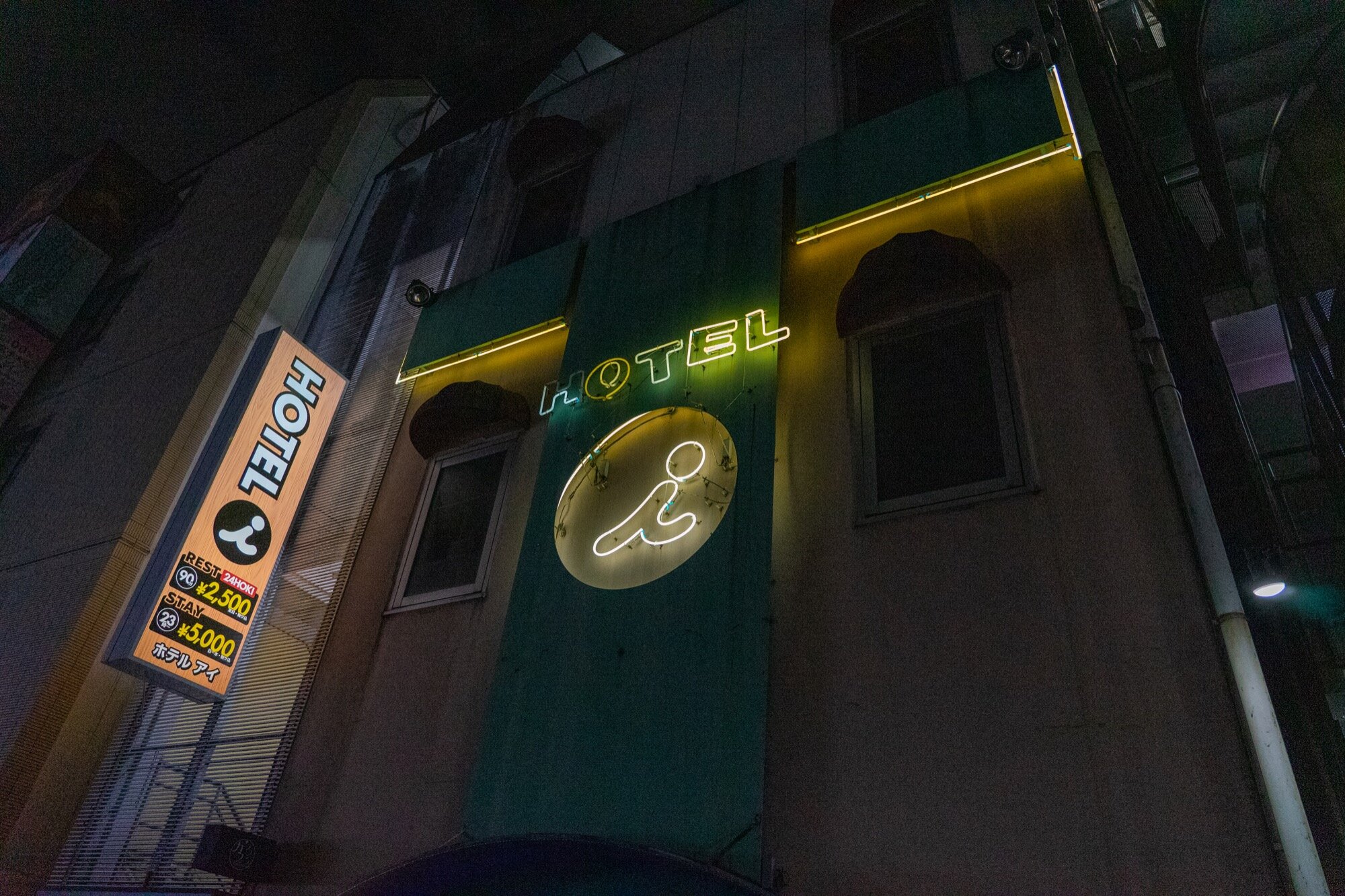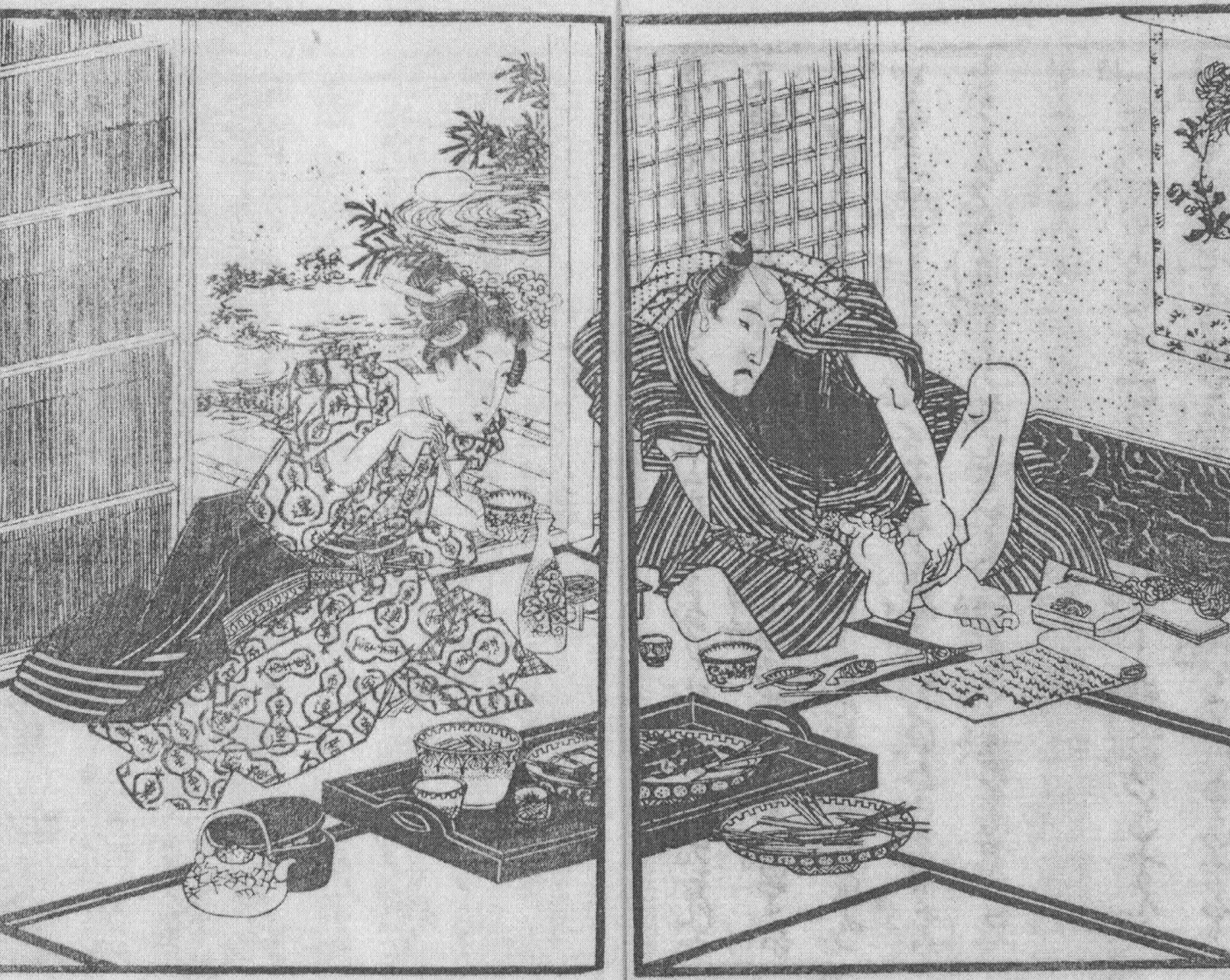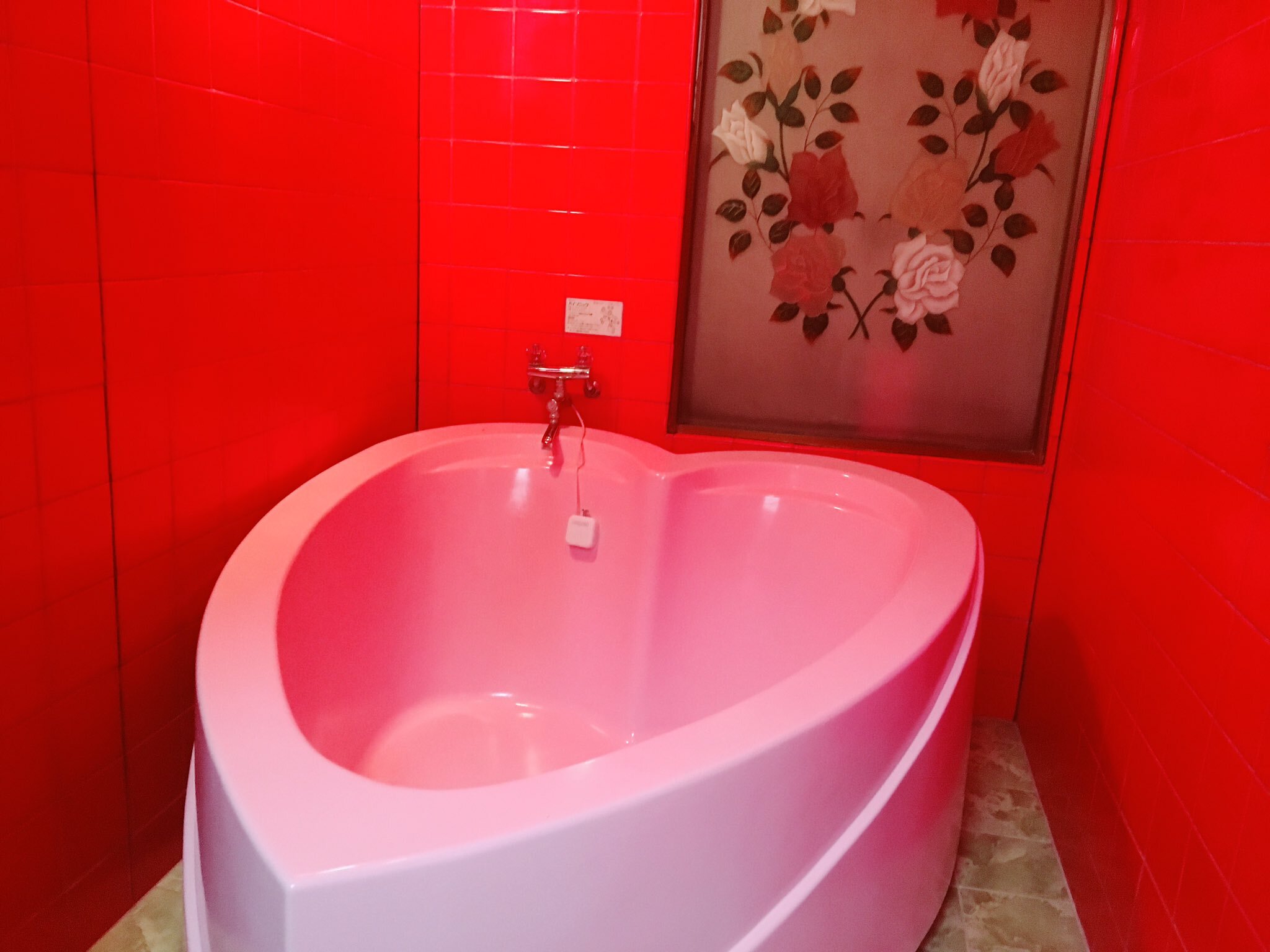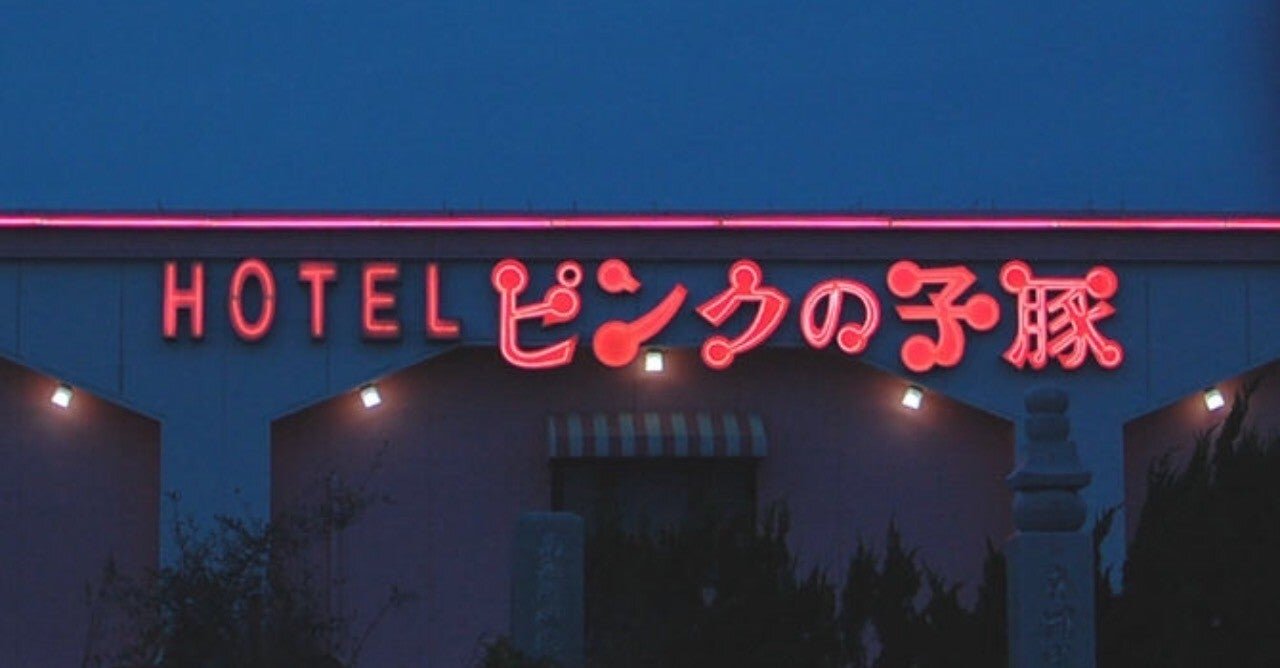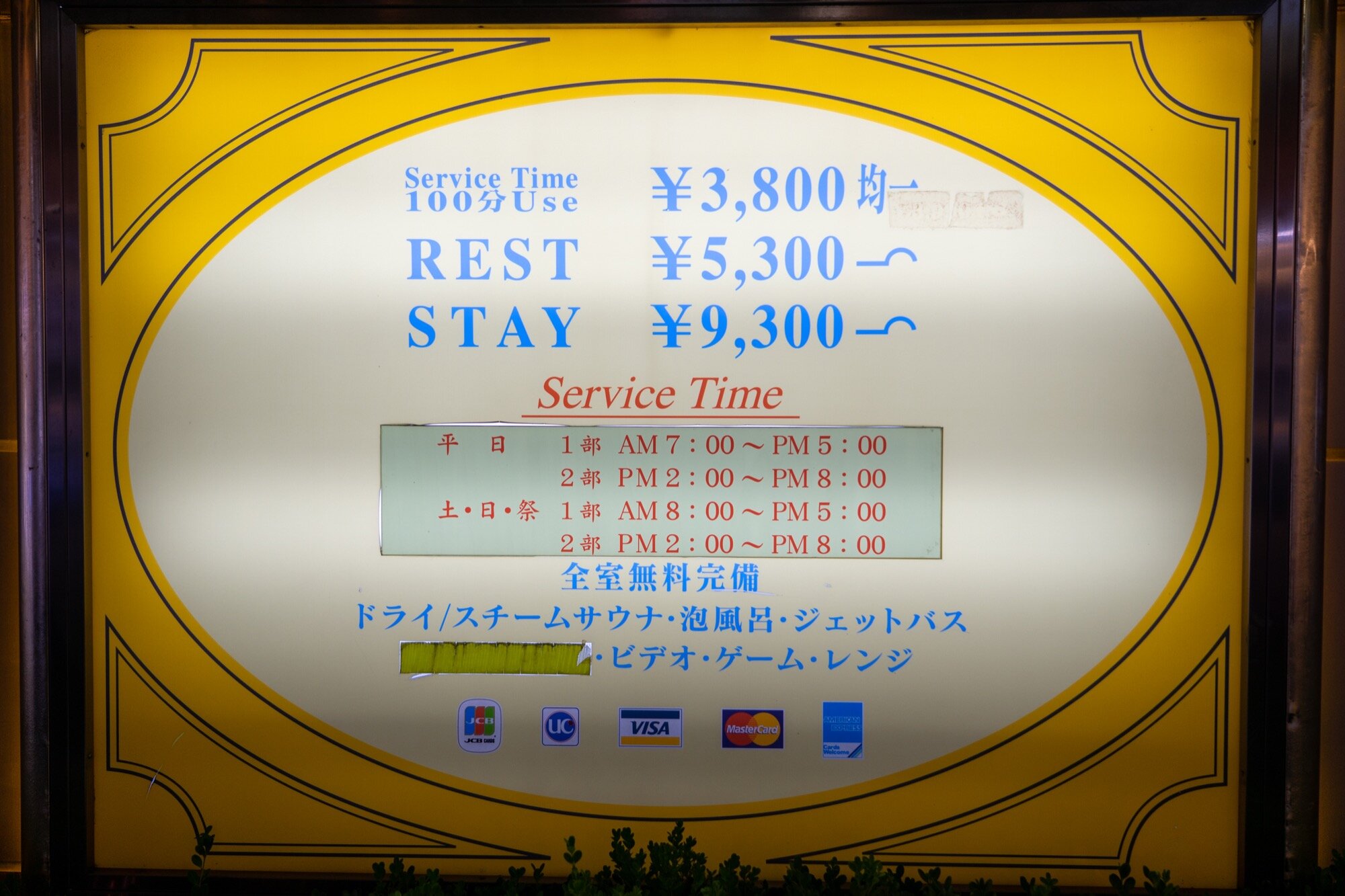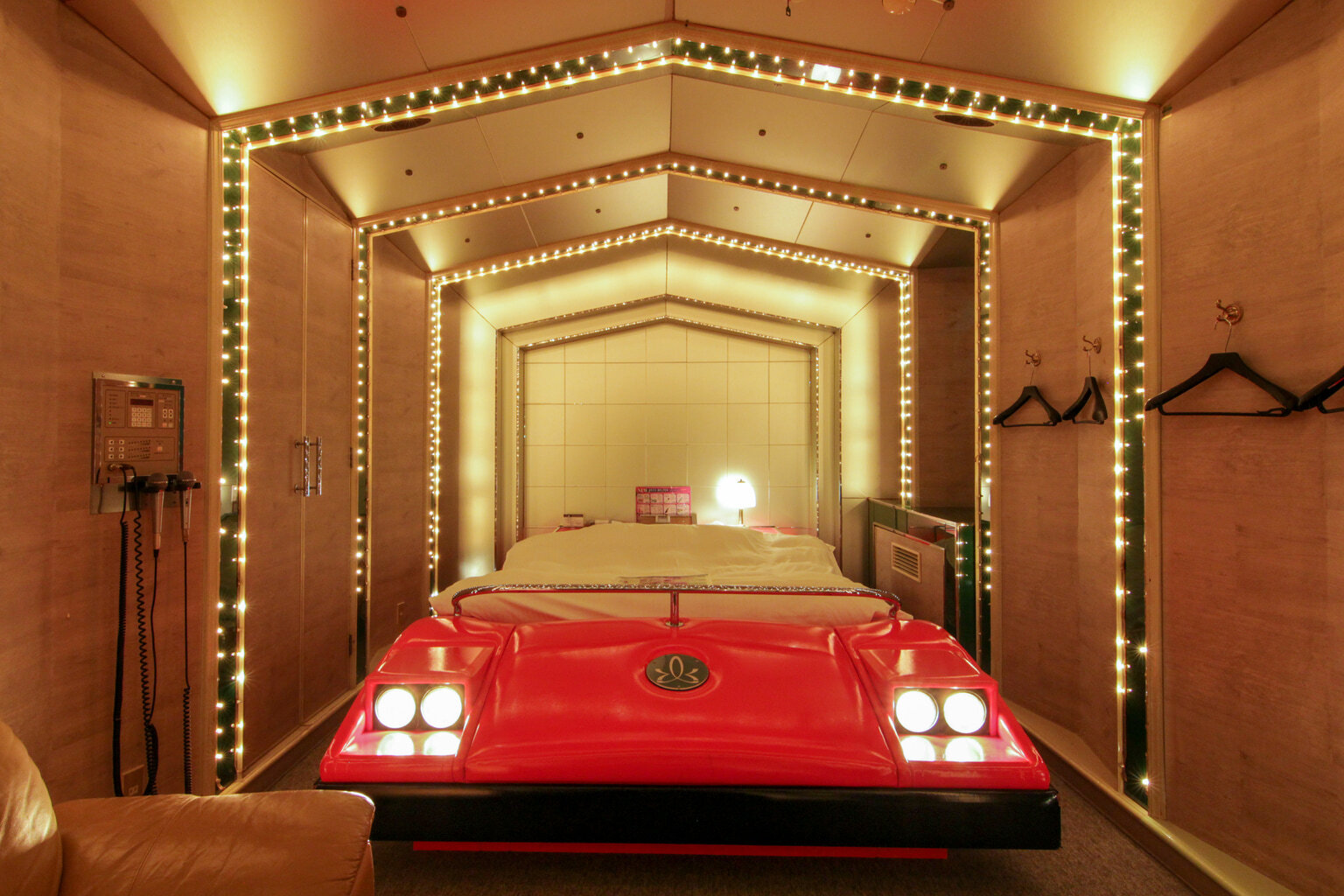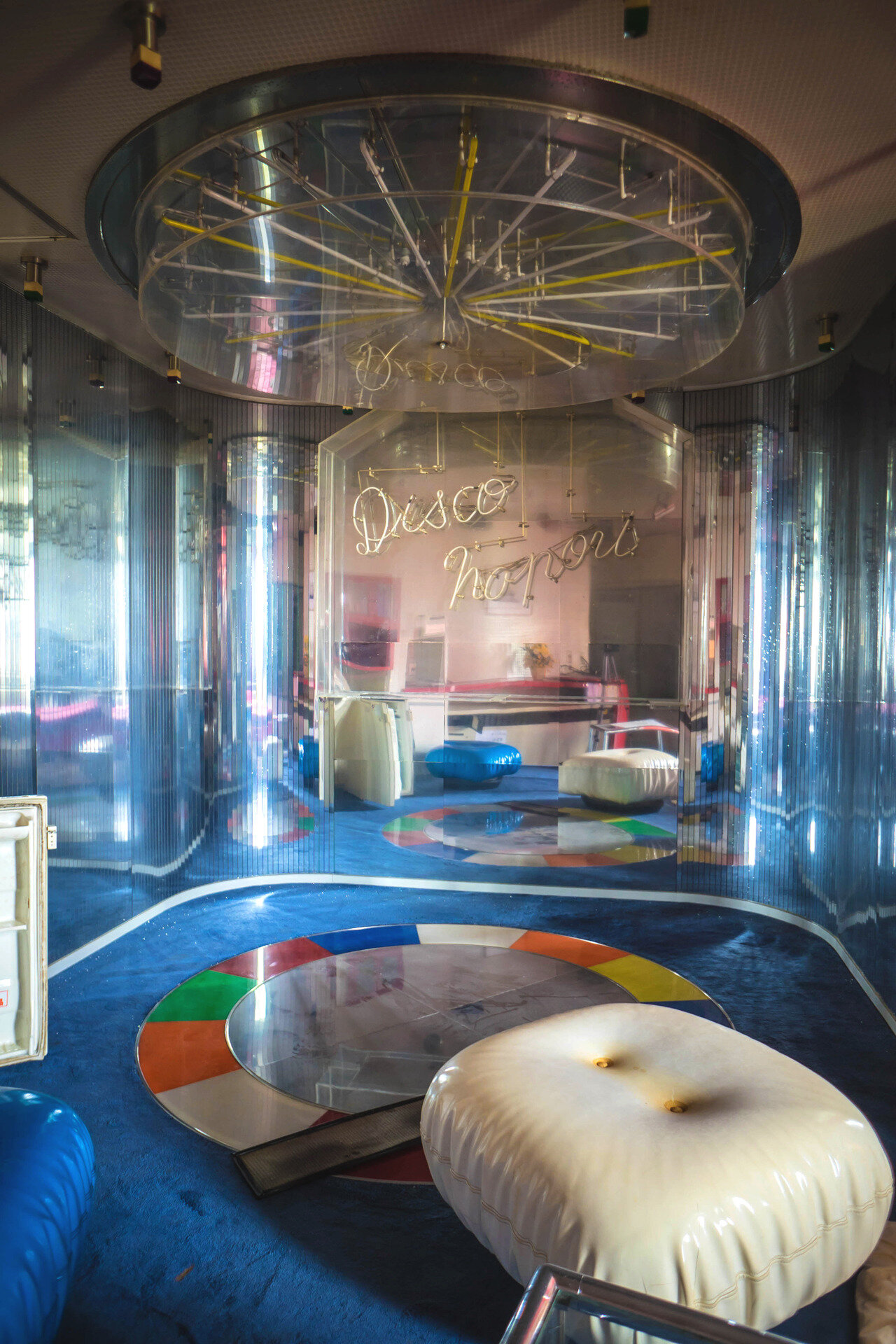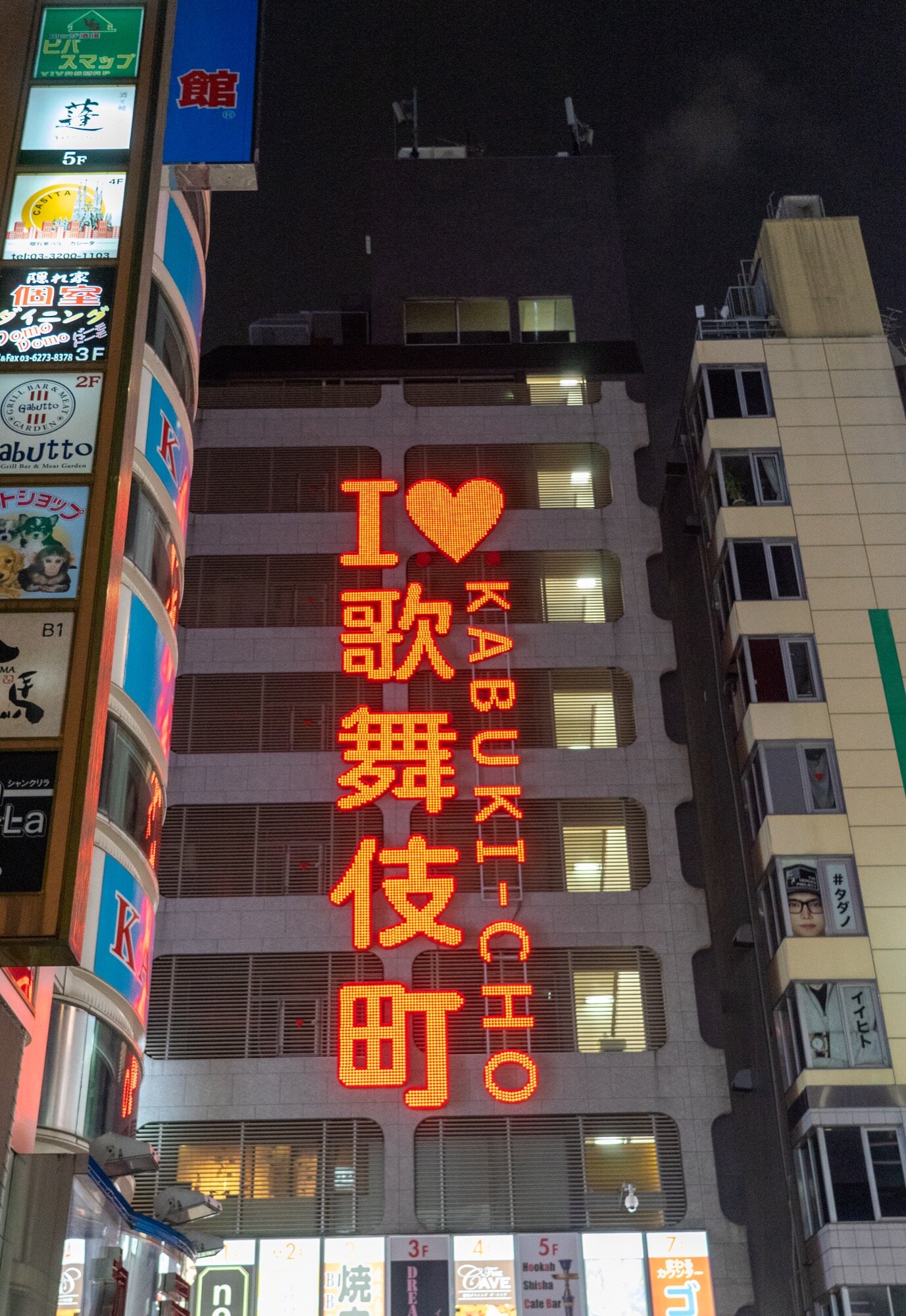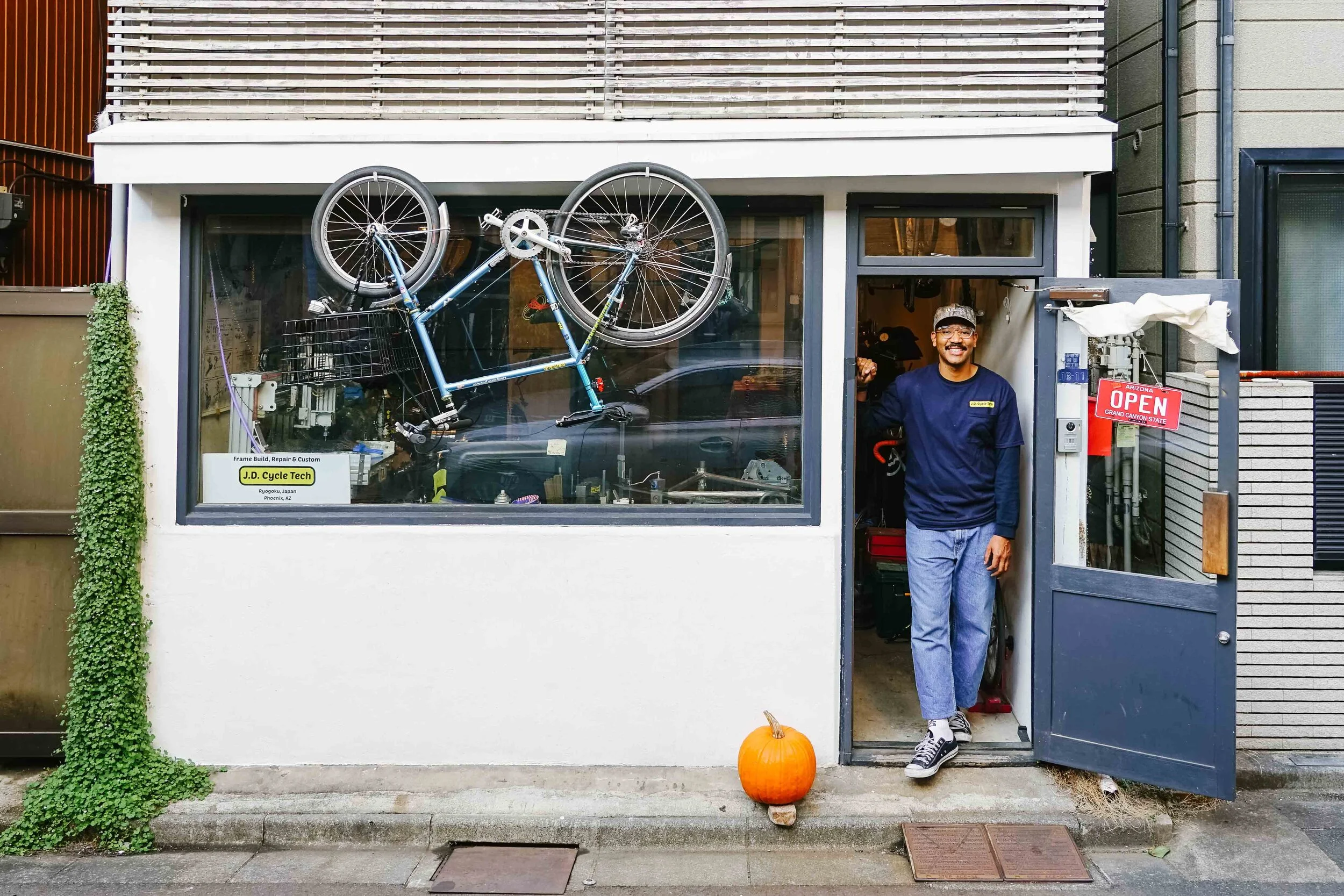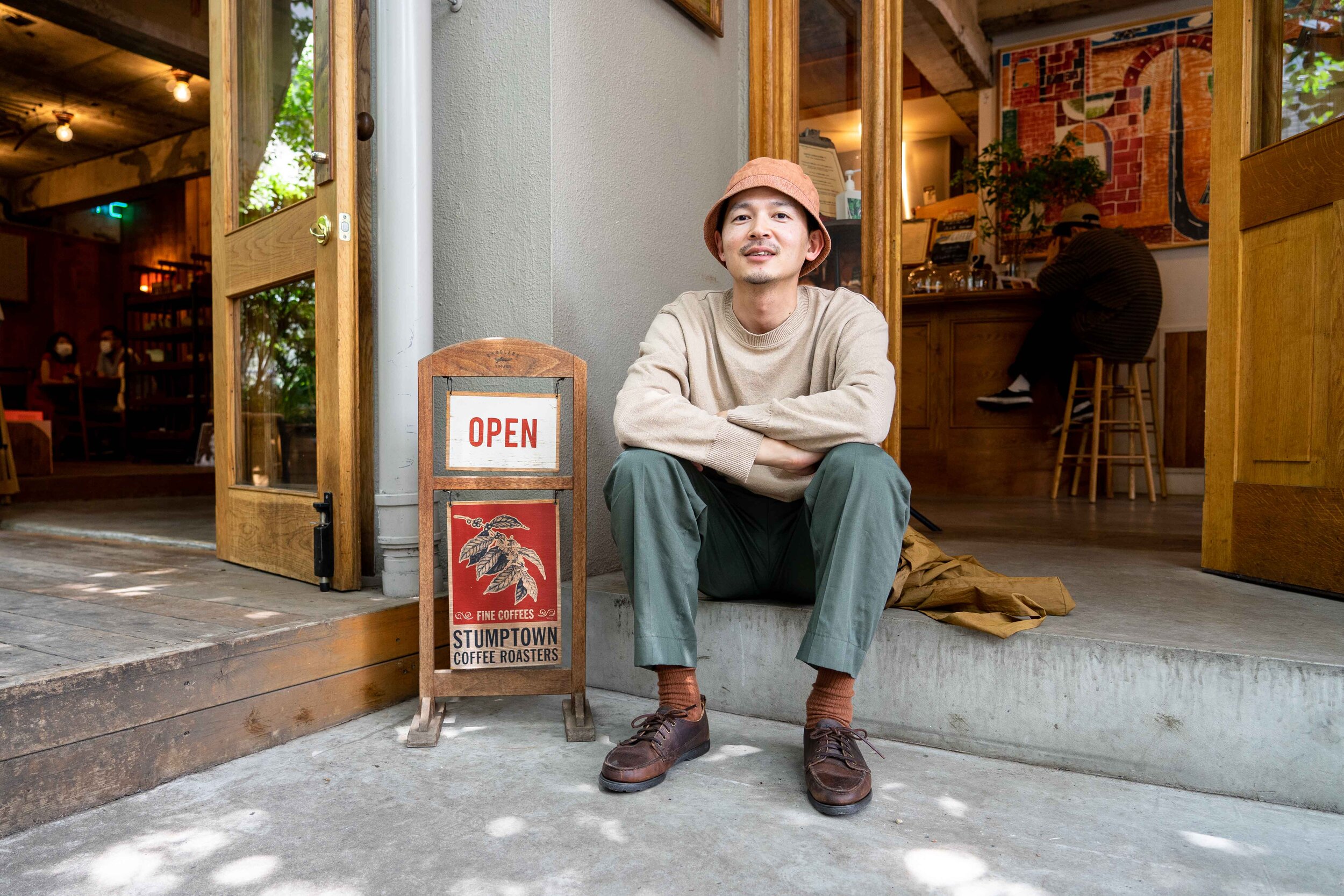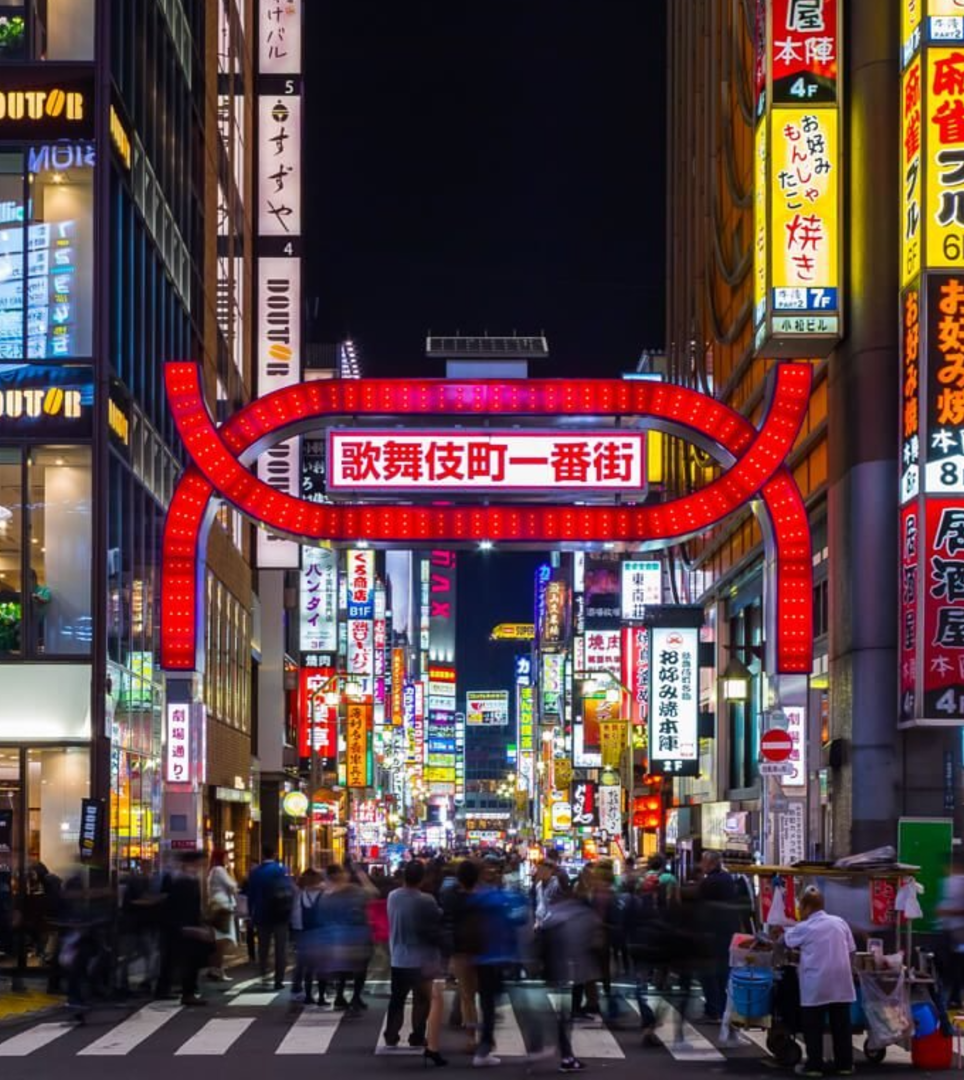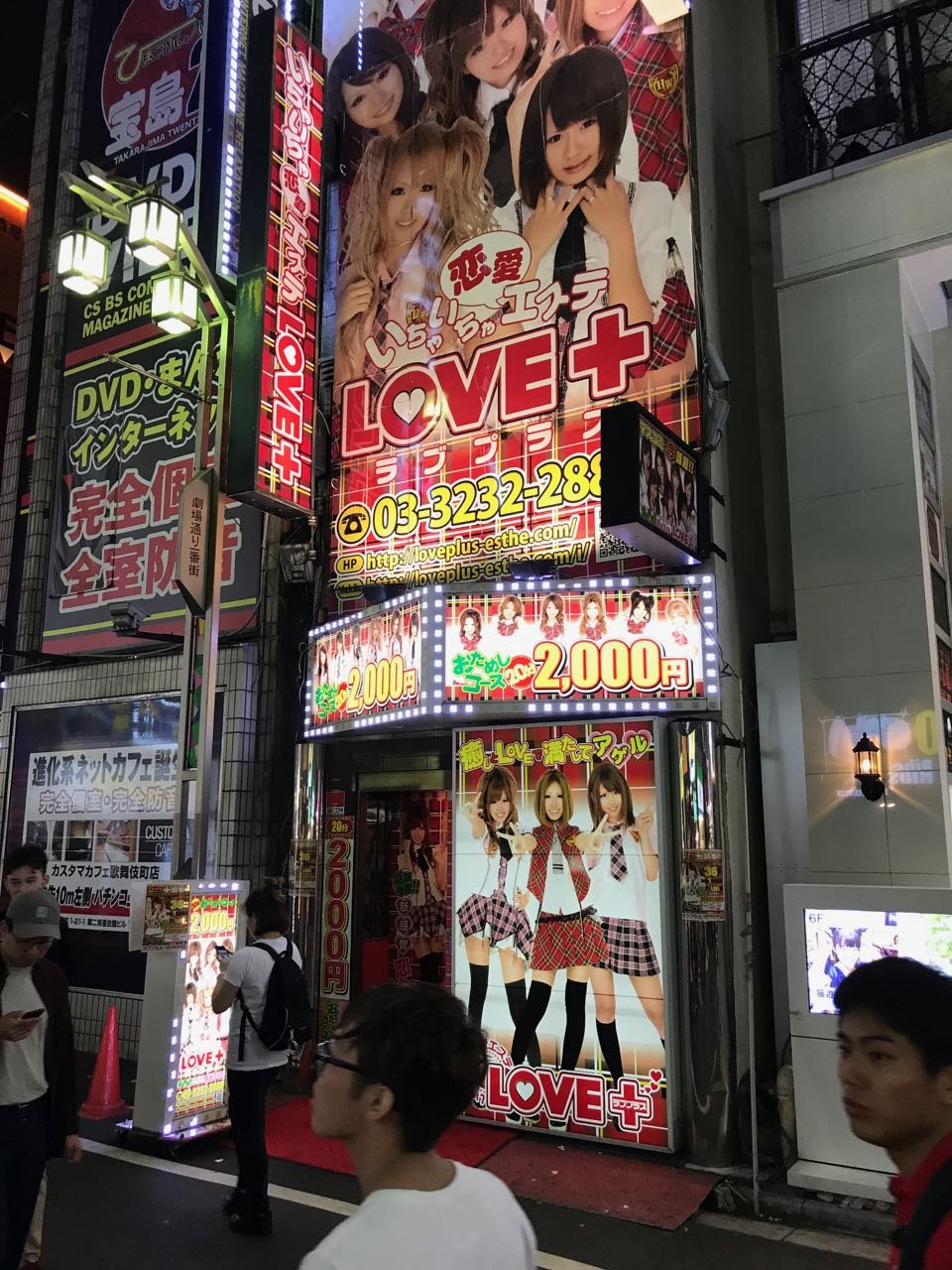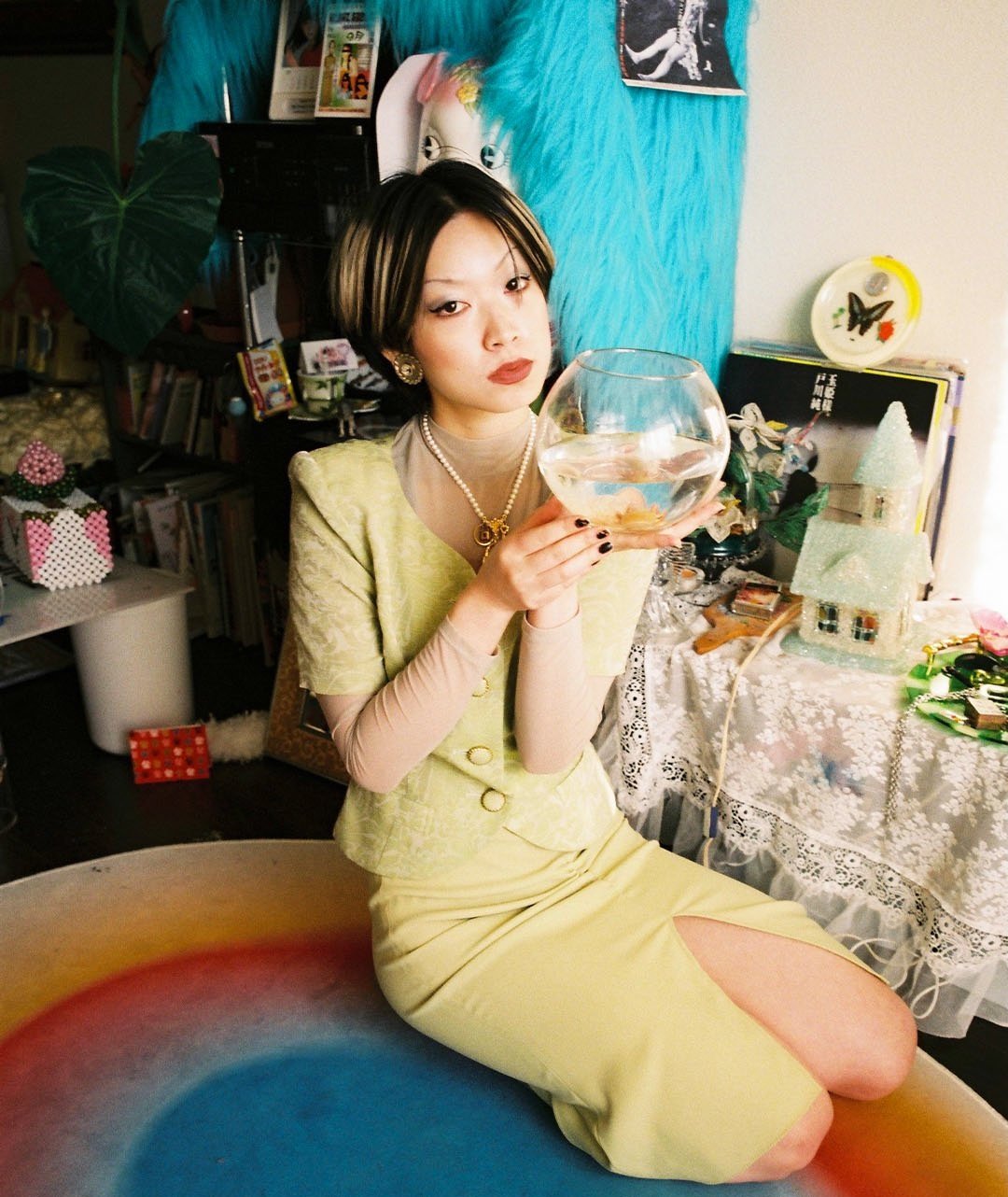LOVE HOTELS AND JAPAN:A SEXUAL REVOLUTION OF LOVE

In the world of hotels, Japan is home to some lodging experiences with unmistakable services, amenities, architecture, aesthetics, and food that is quite literally hard to compare. All in the promise to make guests feel an incomparable amount of comfort and joy while traveling abroad.
And then there are “Love Hotels”, anonymous, sexually injected hotels with wild experiences from 60’s pop culture plastic-themed rooms to straight BDSM rooms, not for the faint of heart. These places birthed a culture in Japan that has been objected as much as they’ve been celebrated.
Kabukicho - the Mecca of Love Hotels and everything beyond
Time for the Sabukaru team to find out more and dig deep into Love Hotel culture:
THE HISTORY
Before we focus on their existence today, let’s take a trip down “history lane” to where they started, because love hotel history is steeped in a rich tradition that arguably hasn’t moved so far away from what it has become, and it’s worth mentioning.
Love Hotels began sometime during the Edo period [1600 - 1868] when they were commonly referred to as “deai-chaya”[ 出会い茶屋] meaning Tea Drinking Shops. Couples would arrive at these quaint spots where there were approximately 15 private rooms in any one Chaya and be given tea and snacks. After which, a bath would be drawn and couples would take baths together, then be left in private to consummate their sexual desires in secret. To ensure payment their shoes and possessions would be held by the hands of each Chaya until their departure.
cc: Kunichi Toyohara "Kaika 36th Seat, Shitaya Hirokoji, Tori 80"
cc:Utamaro Kitagawa
cc:Shunga
Eventually, the common Chaya would be replaced by the “Machiai”[待合室] and “Sobaya’s”[蕎麦屋]. These were the two types of fornication spaces. They couldn’t be further from one another as Machiai were fairly simple rooms with minimal interaction from the workers. Rooms were in typical fashion tatami flooring with very little accessories to decorate the room making it very simple. Sobaya on the other hand were Japanese noodle shops with rooms for rent. Less likely for couples to use, more commonly they were used by single men who would bring prostitutes or geisha for sexual encounters.
cc: nippon.com
One of the main challenges apart from them being rented for short periods by patrons wishing to partake in sex was that it was difficult to know whether or not these establishments were authentic noodle shops from the outside or Sobaya’s that doubled as rent a room sex spots.
Oddly as it might seem by today’s standards and cultural rules for Japanese people, by the beginning of the early 1900’s many ‘couples’ would partake in sexual encounters in open public parks, for instance, the Imperial Palace Grounds. However, it didn’t last very long. The parks in the mornings would be home to, used condoms or ‘paper scraps’ with semen on them, leaving the parks in disarray. A few decades later after much was considered about how to curb this problem so the parks could go back to their splendid glory, the “enshuku” or [one yen rooms per hour] appeared and could be rented and used for having sex. Thus cutting out the Sobaya and the Machiai rooms.
Newspaper Clipping advertising the Enshuku in 1930. cc: Yomiuri Shimbun
At that moment, the enshuku appeared with its western take on elegance. It became the ideal environment for couples to rent out a private room designed with western furniture that had door locks from the inside. Moreover, with the occupation of military forces in Japan leading to the end of legal prostitution during the late ’50s, enshuku [園宿/縁祝] and bathhouses were the only options. Finally reinvented in the early ’60s, Japan began to see the inception of the “Love Hotel”.
ROMANCING THE 60s
cc: @elunation(twitter)
This is where the real story of the Love Hotel began. Thanks to the progress of the miracle mile [time where Japan had exponential economic growth between 1945 -1991] in Japan with couples, parents, and frankly anyone who wanted to get down and boogie who couldn’t do it at home, enshuku were it. Japanese homes were too small to have privacy. Often was the case, entire families lived in one home together. So the concept of a “Love Hotel” tsurekomi yado [ 連れ込み宿 - bring along motels ] allowed people the freedom to exploit their sexual desires, and thanks to these unique establishments they could awaken their sexual fantasies without the difficulty of nowhere to go, as the outdoor parks were no longer an option and the Machiai and Sobaya were long gone.
The ’60s were by many accounts the beginning of themed rooms such as clamshell beds, electric beds, ceiling mirrors, foam-filled baths, and ultimately whatever these businesses could fathom, that attracted lovers to frequent. They were unlike anything else, to say the least. Highly visceral rooms painted in invigorating colours with ambient lighting, decorated to exploit erotic sexual encounters. Many rooms in lush red with almost pornographic themes of sex influencing raw erotica that breaks the normal conventions that people are likely to experience by today’s standards. Some rooms with daily experiences built into them, for instance, a subway car with the bench and standing section with hanging handles and a place for luggage.
An experience where people could live out their fantasies of sex on a train. Japanese trains can be very crowded at times, and even in the 60s with the crowded trains and people up close touching, and breathing on one another with sometimes the sweet sweat of someone they find attractive causing hot tense moments of sexual intensity that people are unable to act on in those moments. Love hotels understood it and packaged it for people to take advantage of, if that is what they fancied.
The 60’s boom of the Love Hotel was, however, brought on because the automobile became more accessible. It gave people the chance to venture out to different places and make their time more intimate. Through the trend of love motels spreading further through Japan, they only solidified the concept of their existence and their growing relevancy for couples who wanted to do the “know someone in the biblical sense”.
More importantly, it spawned essentially the most famous Love Hotel, being Meguro Emperor Hotel in Tokyo. What made this medieval-esque hotel unique compared to others was its first ever castle-like appearance visible from the outside. Something very unlike the typical architecture that was prevalent at the time. Second, being it had much of what available at most love hotels, however, possessed an overly high sense of westernized luxury at the time that was beyond what was conventional.
Love Hotels while they provided an opportune amount of anonymity for patrons, their architecture also in the minds of Japanese proved to be more as vestibules of gaudy, bizarre visual facades, just like their interiors and sex toy walls at the entrances. Some of those Love Hotels of the past still exist in various places around Japan, for example, Love Hotels in the shape of large Yachts, alien space ships, hotels with weird entrances like Dotonbori Hotel, and of course lots of castle-like establishments.
Many of the Love Hotels reverberated what was created with the Meguro Emperor Hotel. Creating fortress-like exteriors that were standout eyesores with rapunzel-esqe guard towers, and highly decorative baroque construction compared to the conventional architecture surrounding each city or area they were erected in.
Hotel Chapel Christmas
Some could argue that there were less strange-looking love hotels as wildly designed as many people had accounted for, as it was more so large bright neon evocative signage similar to that of western adult establishments with language stereotypical of a more sleazy nature, seen in North America or Europe.
Hotel Pink Piglet
Hotel: Donut & Banana
Love Hotels with names like Hotel Fantasy, Banana & Donut, The Raging Racoon’s Enormous Sack, A Ponytail, Blowing in the Wind, Pink Mochi, Naughty Kitten, Daytime Friend, Santa’s House, etc… The immeasurable amount of cheese was comical as it was prevalent.
By the mid-80s, the boom of the raunchy X-rated love hotel was falling fast. This is because love hotels had received so much criticism from their natural affinity to attract people from less than socially respectable professions and all those associated with those groups i.e. prostitutes, gangsters, or anyone looking to use these hourly hotels as a way to lure naive patrons to extort them, hide their crimes anonymously, or worse yet commit murder. Even now Kabukicho’s red-light district still has a series of unsolved murders where women were killed in various strings of love hotels.
More famously at that time, Akina Nakamori a big Japanese pop icon at the time sang a song called, ‘Shoujo A’ that was popularly inspired by one of these murders.
LOVE HOTE REFORM
Through all the mounting attention and the growing negative public image of love hotels, the 1985 “Inn Laws or Entertainment Laws” were put into place and regulated by the police. The laws became a way to distinguish and regulate sex-related hotels and non-sex-related hotels.
Many luxury hotels that fit the love hotel models were either shut down or simply closed. From then on new love hotels were designed to avoid the bold visual characteristics they typically had, and to become discrete places that didn’t raise issues publicly if they were near schools or areas with communities of people and businesses.
UFO Hotel
One of the main advantages the laws provided as they allowed Love Hotel owners the opportunity to simplify their hotels and not be near as burdened financially in upkeep and design. More couple-friendly hotels were better for business, providing more opportunity for growth as well as expelled the old way of men taking women to a hotel. It became something where couples decided together to go instead. Because of that idea, the stereotypical love hotels of the past began to vanish and more importantly became less expensive.
Yes, the conventional stereotype of the 60’s love hotel is not what it once was, and has become a piece of cultural history, but Japan loves its history.
That is not to say that Love Hotels in Japan disappeared altogether. Of course, they exist. Sadly in many ways, while many of the crazy or absurd-themed rooms are gone today, they became better than what they once were. Oddly one of the adverse effects of the Inn Laws was that ultimately allowed almost more love hotels to flourish. This is because it narrowed the scope of what was defined as a love hotel and therefore allowed for owners to creatively make new genres of hotels such as romance hotel, fashion hotel, leisure hotel, amusement hotel, couples hotel, boutique hotel, etc.. and any other genre that may have trended as the zeitgeist of hotels shifted, even till this very moment. It was almost as if, today the original idea of the love hotel has almost come full circle to where it began in some familiar way. Not precisely the same but not entirely different.
Oddly one of the adverse effects of the Inn Laws was that they ultimately allowed almost more love hotels to flourish.
And today… Japan’s Love Hotels remain part of a cultural signifier of experiencing something unordinary, which is why people still flock to them and want to learn about them. They’ve managed to exist in a society where shedding one’s aversions to anything risky or standout-ish is the common thread to keep one’s social acceptance.
Something incredibly remarkable today is how the Love Hotel has become this sort of specimen of cult standard outside of being a signifier. While Japanese are less likely to mention it openly, western travelers that come want to revel in it, photograph, and experience their smutty and explicit demeanor.
500 Yen thong gumball machine.
A sex toy vending machine.
Some love hotels with sex dolls for varied kinky experiences.
Sabukaru is certainly not saying Japanese people don’t venture to them today, they do! And of course not to say all Japanese dislike Love Hotels, absolutely not the case! They wouldn’t exist if Japanese people didn’t think there was a reason for them. They certainly do, but they do in private! Yet, it's because while the typical hourly rate options are still available, the night stay options have become a way to attract more foreign interest.
Rooms are in most cases larger than your average Japanese business hotel and cost less than staying at a hotel with a respected public image. Of course, the mainstay will always be Japanese people needing that intimate privacy.
In the spirit to give our Sabukaru readers who come to Japan and want to experience firsthand the pure excitement of the Love Hotel, what you can expect upon entry into one of Japan’s more modern Love Hotel’s is an unmanned ‘Front Desk’ with digital images on a screen, with all the rooms they offer in the hotel.
The available rooms will be lit up, to see the interior better as well as accompanying Information in Japanese regarding the cost of that room. There will be likely three prices, Rest Stay Price usually 3hrs [休憩 ], No Time Price [ノータイム ], and Overnight Stay Price [宿泊]. Once you make a decision on price and room, you will need to make your selection on a digital pad for your payment. If you need assistance, you can get help from the staff behind usually a black cover and they will assist to make your selection easy and painless.
In many cases, Love Hotels have recognizable signage apart from their usual and obvious hot coloured LED entrances on the outside of the entrance with the two or three rates they offer for patrons wishing to get information without having to conspicuously enter. Rates vary from place to place and, in some instances have reduced prices for those wishing for a bargain, i.e. early morning to mid-evening. Check-In and Checkout times are often later than standard hotels. Finally, if you ever come across a hotel that says [Adults Only], it’s like a Love Hotel!
Old air-tube system for sending and receiving request/receipts is still used in some old retro love hotels such as figured above in Hotel UFO.
Those things aside, the reason to celebrate Love Hotel’s is that they are an expression, and symbol of exploring beyond the conventions of normal or anything expected. They are a symbol of Japan’s unconscious and conscious desire to connect emotionally with one another in a way that is void of the socio-economic rules the country is always pushing towards. They are places where sexual exploration can be met with openness and equal awareness of people's desire to traverse what can sometimes feel like a deeply scrutinized alien-like existence when compared to the safe expected and ordinary hotel experience.
About the author:
Mr.X a 13yr veteran of Japan and design professional part of the Sabukaru Team.

